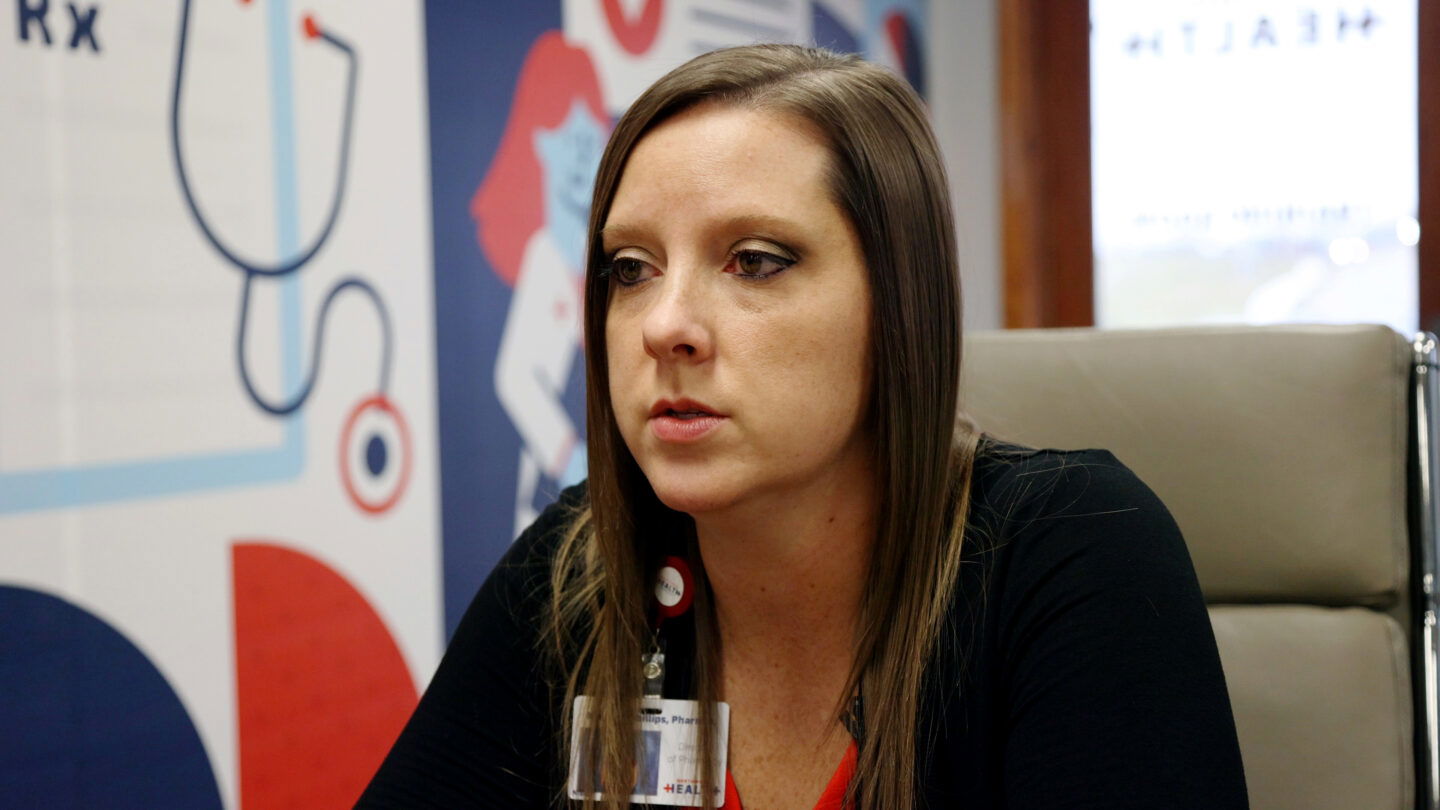“It’s just not doable”: Industry hardships could lead to notable demand for pharmacists

By Cameron Montemayor
Behind the counter of a retail chain pharmacy, a young technician processes the first of potentially hundreds of prescription orders that will pour in over the course of the day.
As the drive-thru begins to fill up and patients line the front counter, the phone rings. With a small team of pharmacists and technicians at certain times, it’s easy for staff to get overwhelmed balancing those tasks and a host of others. Giving immunizations, tests for blood sugar, blood pressure, counseling patients and more are all a required part of the job.
“Pharmacists now, they have a lot of demands on them,” said Miranda Phillips, pharmacy director with Northwest Health Services. “They’ve been burnt out from COVID, they were kind of burned out from all these responsibilities put on them, and a lot of people are looking for work-life balance … long hours with not many breaks … that really plays a huge factor in people’s lives.”
Phillips, who began her career in pharmacy as a technician back in 2005 while attending UMKC and spent eight years working for Walmart pharmacy, said long hours and few breaks can cause pharmacists to get fatigued and become more prone to errors and mistakes.
At many retail pharmacies like CVS and Walgreens, it’s not uncommon for a retail pharmacist to come to work at 8 a.m. and leave at 8 that night, sometimes multiple times a week with no breaks. Depending on the location, two to three pharmacists can be asked to fill anywhere from 400 to 1,000 prescriptions depending on the location.
“If you mess up and get your fast food order wrong, then you’re upset. But when they mess up and get a medication order wrong, you know, that can be deadly. There can be serious consequences with that,” Phillips said. “So we want to make sure that the pharmacist is having enough time to look at each prescription, make sure it’s accurate, not being rushed.”
The health care industry saw 13,323 new pharmacists graduate from 136 AACP pharmacy schools in 2022, 900 fewer than the previous year and the largest drop since 1983, according to a November report from the Philadelphia College of Osteopathic Medicine.
“We’re seeing enrollments drop at the pharmacy schools, all four of our schools here in state of Missouri are struggling with enrollment,” said Ron Fitzwater, CEO of the Missouri Pharmacy Association. “The cost of these programs are going up substantially and incomes going down. It’s not a good mix. And students are just not selecting it like they were 14 years ago.”
More than 60,882 job listings were posted for pharmacists in the first three quarters of 2023, a 17.9% increase from the same period in 2022.
Google search results showed 20 different job listings for nearly every pharmacy position across CVS locations in St. Joseph, from pharmacy technicians and pharmacists all the way to pharmacy managers. Pharmacy-related job listings for Walgreens in St. Joseph were notably fewer with just three.
With fewer pharmacy school graduates and a rising number of job openings, the pharmacy industry could potentially see unprecedented demand for pharmacists and pharmacist technicians in the future.
Pharmacists take action
Frustrations hit a breaking point in September and October of 2023 as dozens of pharmacists at CVS and Walgreens orchestrated two large waves of walkouts across Kansas City to protest working conditions, causing store closures. The events started a chain reaction that led to pharmacists at hundreds of stores following suit across the country.
That came after Walmart reportedly asked its 16,000 U.S. pharmacists to voluntarily take pay cuts by reducing their hours, according to a report from Reuters.
The impact has taken a toll on chain pharmacists’ morale, of the 5,000 responses submitted in the 2022 National Pharmacist Workforce Study; a majority of pharmacists and pharmacy technicians working at large chains reported being very dissatisfied with their jobs. Overall scores were the lowest in 20 years.
“I think there will be a shifting point definitely, and things need looked into. These measures that certain places are wanting them to hit, it’s just not doable and it’s just not safe for patient care,” Phillips said.
The labor shortage has forced CVS to make significant cuts to its workforce, with around 900 stores expected to be closed between 2022 and 2024.
Bucking the
national trend
Head pharmacist Rex Robinson walks into work every day at Rogers Pharmacy surrounded by a strong staff of eight pharmacists and more than a dozen pharmacy technicians.
Having spent three years early in his career working in large chain pharmacies, he’s seen the burden that high workloads and quotas can do to pharmacies and ultimately the patients and communities that depend on them.
“That’s been one of the keys to our success, is that we have enough people to handle the business that’s coming in. I know a lot of chain stores don’t have that luxury and it makes it really tough on the pharmacists to work there,” Robinson said.
While the number of independent pharmacies has stayed relatively the same in the U.S. over the last 20 years, the number has dropped by nearly 50% since 1980, according to a 2022 National Community Pharmacists Association report.
“Your independent pharmacies are becoming few and far between. So that’s all you’ve got in a lot of towns is a chain store. And if they’re not there until noon or 1 p.m., what are you going to do when you’ve got a sick baby?
Much like Robinson, Phillips emphasizes keeping a healthy work-life balance for her pharmacists at Northwest Health Services. If she notices a pharmacist or technician struggling or falling behind, she’s quick to hear their concerns and address the problem. Hearing them out can be vital toward retention.
In the face of declining graduates and rising job openings, recruiting from an earlier age and showing students all of the various pathways in pharmacy that go beyond independent and chain pharmacists could open their eyes to a new career.
“I think it’ll be huge to go to high schools, go to places to recruit,” Phillips said. “There’s many other branches, you know, there’s admin like director positions, there’s hospital positions. Pharmacogenomics is a huge setting coming up.”
Fitzwater and the Missouri Pharmacy Association are actively working with colleges and organizations in Missouri to help cater to the evolving needs of the workforce and improve pharmacy enrollment.
“You’ve seen this generation, they’re not terribly motivated by dollars. … It’s lifestyle, it’s work, relationships. And we’re all working very aggressively because the way pharmacists are being trained in the schools today is a much broader profession than what it was two, three or four decades ago,” Fitzwater said.




